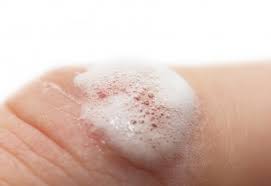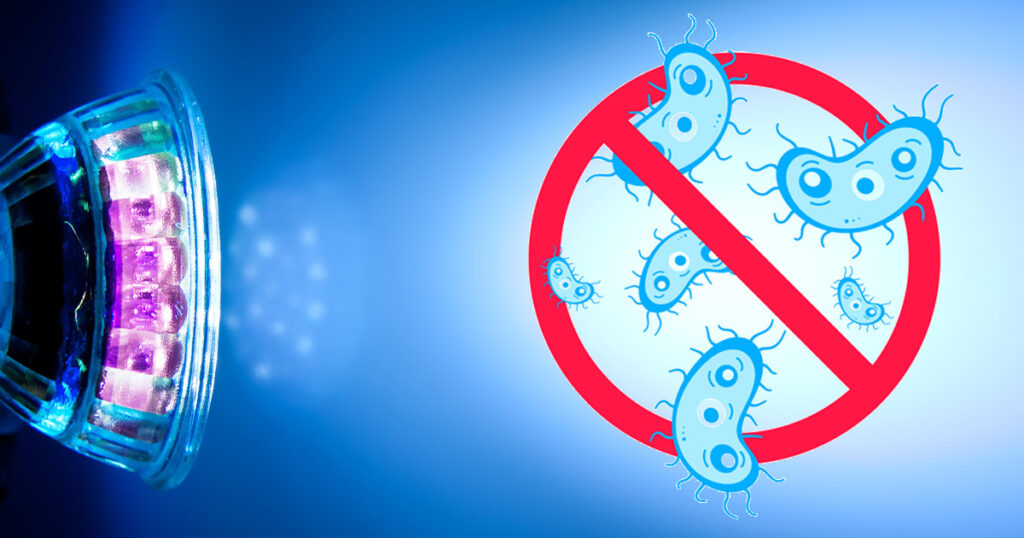As the increase in number of antibiotic resistant strains of microorganisms grows, the search for alternative treatments of microbial infections becomes more important. Most of us are familiar with the foaming action that appears when we pour hydrogen peroxide on a wound. That white, fizzling foam is actually bubbles of oxygen reacting with an enzyme called catalase that is released from damaged cells and also with some microbes. However, hydrogen peroxide isn’t an ideal disinfectant because it also kills fibroblasts, which are a type of connective tissue the body uses to help repair wounds. So it is often recommended not to use H2O2 for extended periods because it can damage healthy tissue.
But what if our Lights could help with this problem and not damage tissue?!?

3 Ingredients for Anti-Microbial Success: Oxygen, a Chromophore, and Light
Photosensitizers are non-toxic dyes or colored parts of cells which are activated by certain colors of Light. A growing area of medical research called Photodynamic Therapy (PDT), centers around the use of various photosensitizers inconjunction with Light to oxidize and kill anaerobic microbes and other oxygen sensitive cells.
When these photosensitizers are exposed to a specific wavelength of light (usually red, near-infrared, blue or green), they produce a form of oxygen that kills nearby cells – Reactive Oxidative Species (ROS). ROS are a type of unstable oxygen molecule (like H2O2) that easily reacts with other molecules.
The good news for users of Light Therapy is that many bacteria naturally produce their own photosensitizer called protoporphyrin IX. Porphyrins are pigmented compounds (chromophores) that play major roles in processes such as oxygen transportation and photosynthesis. In the case of bacterial cells that produce porphyrins, Light photoinactivates the intact bacterial cells because of the photosensitizer molecules (porphyrins) produced and stored within the bacterial cells themselves!
The PDT mechanism requires a recipe of 3 ingredients in the body at the same time. Oxygen, the Chromophore (photosensitizer), and absorbed Light. As many harmful microbes provide their own photosensitizer, and we have tools to provide light, it is only necessary to make sure that the body has sufficient oxygen in the blood.

There is some variation in which colors of light work best for denaturing microbes. But don’t wait to have the perfect tool. Place your lights directly over the wound, or infection, for topical issues. Or, as close to the blood supply as possible for system infections. At the first sign of a cold, flu, or sore throat, I have a torch under each ear for 5 – 10 minutes. Or in my belly button as I watch TV. It has never failed to reverse the oncoming problem for me.
Here is a little “Light” reading on the subject:
Gwynne, P. J., & Gallagher, M. P. (2018). Light as a Broad-Spectrum Antimicrobial. Frontiers in Microbiology, 9, 119. https://doi.org/10.3389/fmicb.2018.00119
Abrahamse, H., & Hamblin, M. R. (2016). New photosensitizers for photodynamic therapy. Biochemical Journal, 473(4), 347–364. https://doi.org/10.1042/BJ20150942

